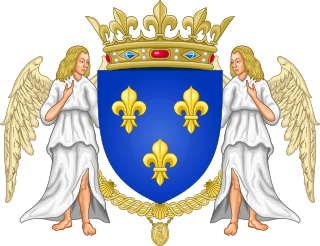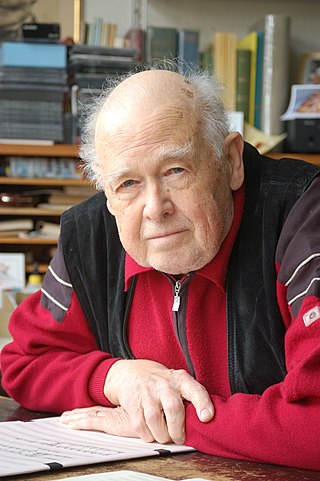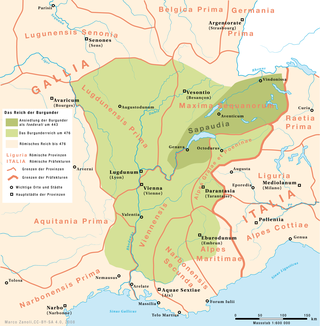
Edward the Confessor was an Anglo-Saxon English king and saint. Usually considered the last king of the House of Wessex, he ruled from 1042 until his death in 1066.

Amphitryon, in Greek mythology, was a son of Alcaeus, king of Tiryns in Argolis. His mother was named either Astydameia, the daughter of Pelops and Hippodamia, or Laonome, daughter of Guneus, or else Hipponome, daughter of Menoeceus. Amphitryon was the brother of Anaxo, and Perimede, wife of Licymnius. He was a husband of Alcmene, Electryon's daughter, and stepfather of the Greek hero Heracles.

The Capetian house of Valois was a cadet branch of the Capetian dynasty. They succeeded the House of Capet to the French throne, and were the royal house of France from 1328 to 1589. Junior members of the family founded cadet branches in Orléans, Anjou, Burgundy, and Alençon.

The House of Saud is the ruling royal family of Saudi Arabia. It is composed of the descendants of Muhammad bin Saud, founder of the Emirate of Diriyah, known as the First Saudi state (1727–1818), and his brothers, though the ruling faction of the family is primarily led by the descendants of Abdulaziz bin Abdul Rahman, the modern founder of Saudi Arabia. It forms a subtribe of the larger prominent ancient Banu Hanifa tribe of Arabia, of which well known 7th century Arabian theologist Maslama ibn Ḥabīb originates. The most influential position of the royal family is the King of Saudi Arabia, an absolute monarch. The family in total is estimated to comprise some 15,000 members; however, the majority of power, influence and wealth is possessed by a group of about 2,000 of them. Some estimates of the royal family's wealth measure their net worth at $1.4 trillion. This figure includes the market capitalization of Saudi Aramco, the state oil and gas company, and its vast assets in fossil fuel reserves.

Hagen or Högni is a Burgundian warrior in Germanic heroic legend about the Burgundian kingdom at Worms. Hagen is often identified as a brother or half-brother of King Gunther. In the Nibelungenlied he is nicknamed "from Tronje".

Gundaharius or Gundahar, better known by his legendary names Gunther or Gunnar, was a historical king of Burgundy in the early 5th century. Gundahar is attested as ruling his people shortly after they crossed the Rhine into Roman Gaul. He was involved in the campaigns of the failed Roman usurper Jovinus before the latter's defeat, after which he was settled on the left bank of the Rhine as a Roman ally. In 436, Gundahar launched an attack from his kingdom on the Roman province of Belgica Prima. He was defeated by the Roman general Flavius Aetius, who destroyed Gundahar's kingdom with the help of Hunnish mercenaries the following year, resulting in Gundahar's death.

Sigurd Snake-in-the-eye or Sigurd Áslaugsson was a semi-legendary Viking warrior and Danish king active from the mid to late 9th century. According to multiple saga sources and Scandinavian histories from the 12th century and later, he is one of the sons of the legendary Viking Ragnar Lodbrok and Áslaug. His historical prototype might have been the Danish King Sigfred who ruled briefly in the 870s. Norwegian kings' genealogies of the Middle Ages name him as an ancestor of Harald Fairhair and used his mother's supposed ancestry the Völsung to create an ancestry between Harald and his descendants and Odin.

Gjúki was the King of the Burgundians in the Germanic heroic legend. He was a member of the Niflungar family, and the father of Gundomar I, Giselher and Gunther.

The House of Luxembourg or Luxembourg dynasty was a royal family of the Holy Roman Empire in the Late Middle Ages, whose members between 1308 and 1437 ruled as kings of Germany and Holy Roman emperors as well as kings of Bohemia, Hungary and Croatia. Their rule was twice interrupted by the rival House of Wittelsbach.

Dark Kingdom: The Dragon King is a 2004 German television film directed by Uli Edel and starring Benno Fürmann, Alicia Witt, Kristanna Loken and Max von Sydow. The film is based on the Norse mythology story Völsungasaga and the German epic poem Nibelungenlied, which tells the mythological story of Siegfried the Dragon-Slayer. Richard Wagner's music dramas Siegfried and Götterdämmerung are based on the same material. Dark Kingdom: The Dragon King was written by the husband and wife team of Diane Duane and Peter Morwood and is a Tandem Communications production. It was filmed entirely in South Africa.

Die Nibelungen is a two-part series of silent fantasy films created by Austrian director Fritz Lang in 1924, consisting of Die Nibelungen: Siegfried and Die Nibelungen: Kriemhild's Revenge.
Giselher was a king of Burgundy in the Nibelungenlied, brother to kings Gunther and Gundomar I. Historically, these correspond to three sons of king Gebicca, Gundomar, Gislaharius (Giselher) and Gundaharius (Gunther), who ruled the Burgundians in the 410s. His name means "pledged warrior".

Giselher Wolfgang Klebe was a German composer, and an academic teacher. He composed more than 140 works, among them 14 operas, all based on literary works, eight symphonies, 15 solo concerts, chamber music, piano works, and sacred music.

Die tödlichen Wünsche, Op. 27, is an opera by Giselher Klebe who also wrote the libretto based on La Peau de chagrin by Honoré de Balzac. It consists of fifteen lyrical scenes in three acts. It premiered on 14 June 1959 at the Deutsche Oper am Rhein in Düsseldorf, conducted by Reinhard Peters, and was published by Boosey & Hawkes. The opera was revived in 2006 at the Landestheater Detmold on the occasion of the composer's 80th birthday.
Giselher, Gisilher, Gisiler, or Giseler is a Germanic masculine given name. It may refer to:
Sigismund of Brandenburg (1538–1566) was Prince-Archbishop of Magdeburg and Administrator of the Prince-Bishopric of Halberstadt.

Die Nibelungen is a 1966/1967 West German fantasy film released in two parts, Siegfried von Xanten and Kriemhilds Rache. It was directed by Harald Reinl and produced by Artur Brauner. Die Nibelungen starred Uwe Beyer, Karin Dor and Herbert Lom. The two films were a remake of Fritz Lang's 1924 silent classic Die Nibelungen, which was in turn based on the epic poem the Nibelungenlied.

The Kingdom of the Burgundians or First Kingdom of Burgundy was established by Germanic Burgundians in the Rhineland and then in eastern Gaul in the 5th century.
Kurt Horres was a German stage director, particularly of opera, and opera manager. He held positions as general manager at the Staatstheater Darmstadt, the Hamburg State Opera, and from 1986 to 1996 at the Deutsche Oper am Rhein. He focused on opera of the 20th century, including composers who had been banned during the Nazi regime, such as Korngold's Die tote Stadt, and literature operas including Gottfried von Einem's Kabale und Liebe, and the world premieres of Blacher's Yvonne, Prinzessin von Burgund, and Klebe's Das Mädchen aus Domrémy. He taught stage direction at the Folkwang University.













